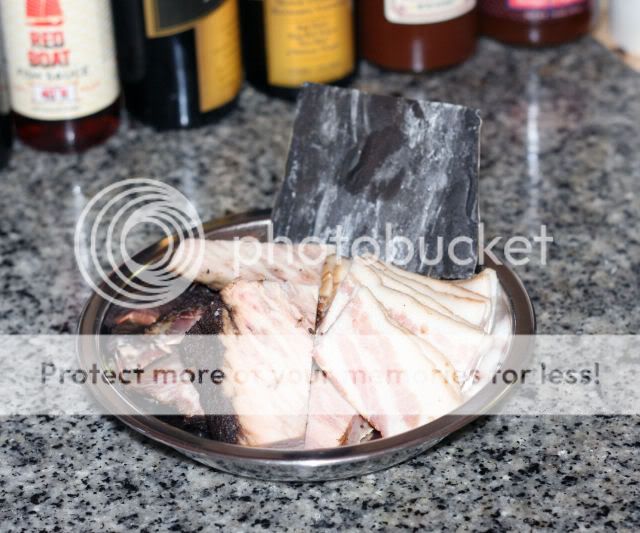All good broths start with a good boil up. The traditional ramen has beef marrowbones and usually a number of pig's trotters. Of course it needs the usual aromatics such as onions, carrots, celery, etc. I am on holidays so cannot provide a precise recipe now. If you enjoy a laugh and can cope with subtitles the movie Tampopo is the best food movie ever (my opinion). It is all about how to make a ramen broth with lots of amusing distractions. It is available on DVD. I have watched it so many times I do not read the subtitle!
John
With all due respect to John, don't do anything like this unless you are making a Euro/British stock.
The reason I caution with quotes is it is so natural to follow our cooking principles from the food we were raised on.
There are many fundamental differences in making a french stock to a Japanese broth.
Tonkotsu Ramen stock:
4kg gelatinous
pork bones like shanks and calves and knuckles
5 1/2 litres water.
Head of garlic
The broth is a beige color and quite transparent so the process to do that is counter intuitive.
Place bones in pot and cover with cold water and bring to the boil for 5 minutes/
Drain water and cool meat, then scrape off everything that isn't coloured white or beige, and poke out the marrow.
(
If you wish to, keep and cook the marrow separately and add as flavourings)
Over high heat, blacked the onion slices and garlic and add to the stock pot.
Place cleaned bones back into the pot and fill with water measurement and boil, then keep at a boil and skim for 8-12 hours, add boiling water as it reduces and intensifies.
You can add the pork belly 2 and a half hours to finishing time but I recommend you put it in the fridge under a weight to set it then slice it cold.
The broth needs to be double strained.
Ramen has two distinctive elements, the broth and the flavourings.
This volume of broth can be flavoured with Kikkoman soy @ 50grams or 1 tsp per bowl.
You can use chili bean paste if you like at the same 1 tsp bowl.
You will need 6 scallion finely sliced and an option to the boiled pork belly is char siuw or roasted pork belly slices, about 3 slices per bowl.
Half a boiled egg per bowl.
! pack or ramen noodles serves 2 bowls and they only need 2-3 minutes boiling in the broth to be ready.
Packet instructions may vary but taste or squeeze between fingers because overcooked noodles make a spoiled dish!
If you think you can speed up the process by using a pressure cooker, forget it.
I and many others have tried, it does not work.:icon_blush:
Bon appetite bro!






